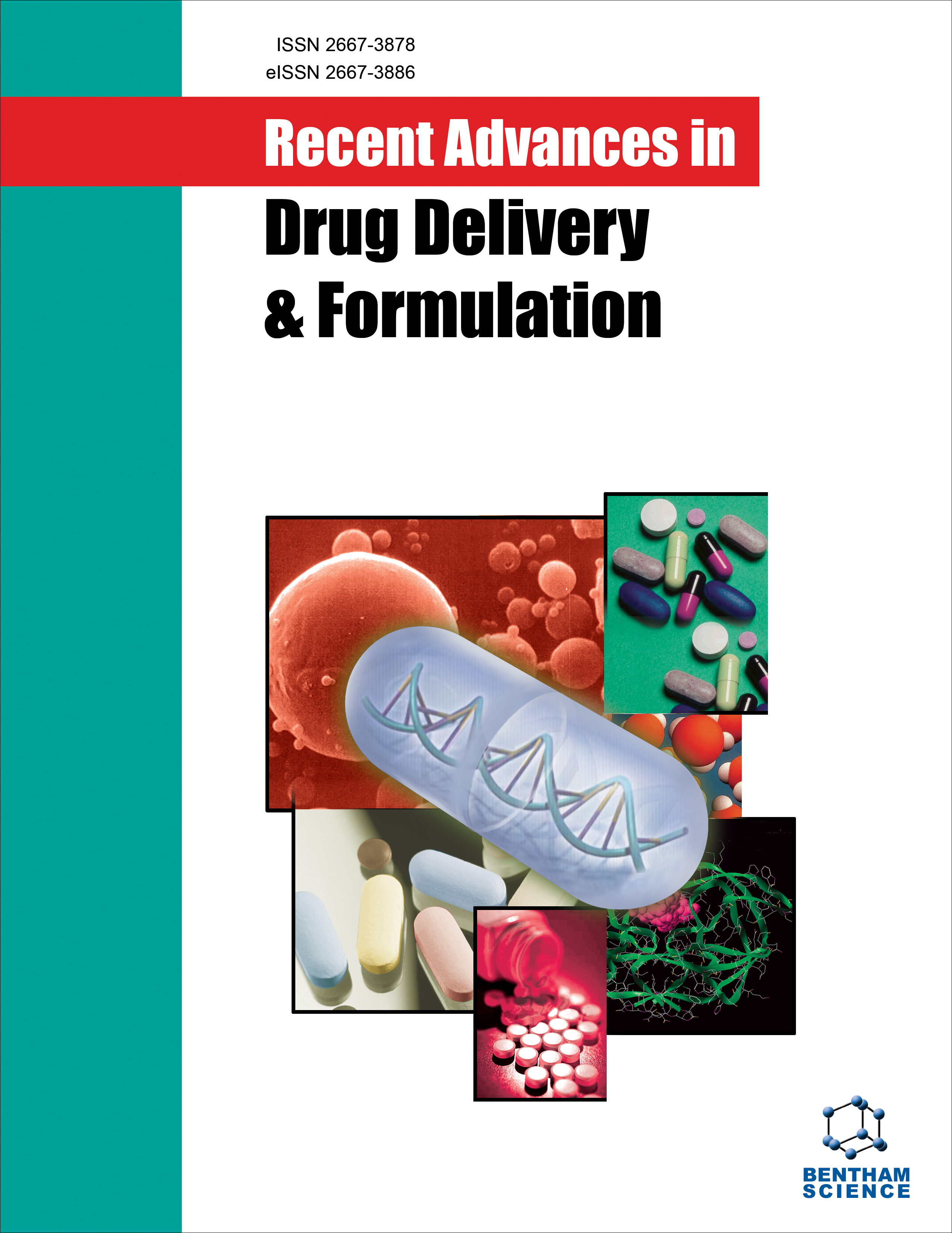Recent Advances in Drug Delivery and Formulation - Current Issue
Volume 18, Issue 4, 2024
-
-
Current Advancements on Oral Protein and Peptide Drug Delivery Approaches to Bioavailability: Extensive Review on Patents
More LessAuthors: Prasanna Parida, Amiya Kumar Prusty, Saroj Kumar Patro and Bikash Ranjan JenaProtein and peptide-based drugs have greater therapeutic efficacy and potential application and lower toxicity compared to chemical entities in long-term use within optimum concentration as they are easily biodegradable due to biological origin. While oral administration is preferable, most of these substances are currently administered intravenously or subcutaneously. This is primarily due to the breakdown and poor absorp Read More
-
-
-
Nanocarriers for Cannabinoid Delivery: Enhancing Therapeutic Potential
More LessAuthors: Varun Singh, Samar Vihal, Rupali Rana and Charul RathoreMedical cannabis has potential therapeutic benefits in managing pain, anxiety, depression, and neurological and movement disorders. Phytocannabinoids derived from the cannabis plant are responsible for their pharmacological and therapeutic properties. However, the complexity of cannabis components, especially cannabinoids, poses a challenge to effective medicinal administration. Even with the increasing acce Read More
-
-
-
Revolutionizing Brain Drug Delivery: Buccal Transferosomes on the Verge of a Breakthrough
More LessAuthors: Pavuluri Chandrasekhar and Rajaganapathy KaliyaperumalThe buccal cavity, also known as the oral cavity, is a complex anatomical structure that plays a crucial role in various physiological processes. It serves as a gateway to the digestive system and facilitates the initial stages of food digestion and absorption. However, its significance extends beyond mere digestion as it presents a promising route for drug delivery, particularly to the brain. Transferosomes are lipid-based vesicl Read More
-
-
-
Polymeric Vehicles for Nucleic Acid Delivery: Enhancing the Therapeutic Efficacy and Cellular Uptake
More LessAuthors: Parul Gupta, Anjali Sharma and Vishnu MittalBackground Therapeutic gene delivery may be facilitated by the use of polymeric carriers. When combined with nucleic acids to form nanoparticles or polyplexes, a variety of polymers may shield the cargo from in vivo breakdown and clearance while also making it easier for it to enter intracellular compartments. Aim and Objectives Polymer synthesis design choices result in a wide variety of compounds and vehicle com Read More
-
-
-
Optimizing Microfluidic Channel Design with High-Performance Materials for Safe Neonatal Drug Delivery
More LessAuthors: T. Archana, N. Nachammai and S. PraveenkumarIntroduction Designing the microfluidic channel for neonatal drug delivery requires proper considerations to enhance the efficiency and safety of drug substances when used in neonates. Thus, this research aims to evaluate high-performance materials and optimize the channel design by modeling and simulation using COMSOL multiphysics in order to deliver an optimum flow rate between 0. 3 and 1 mL/hr. Methods Some Read More
-
-
-
Cytotoxic Impact of Naringenin-Loaded Solid Lipid Nanoparticles on RIN5F Pancreatic β Cells via Autophagy Blockage
More LessBackground Autophagy plays a crucial role in modulating the proliferation of cancer diseases. However, the application of Naringenin (Nar), a compound with potential benefits against these diseases, has been limited due to its poor solubility and bioavailability. Objective This study aimed to develop solid lipid nanoparticles (Nar-SLNs) loaded with Nar to enhance their therapeutic impact. Methods In vitro experiments using Rin Read More
-
Most Read This Month Most Read RSS feed
Article
content/journals/raddf
Journal
10
5
false
en


